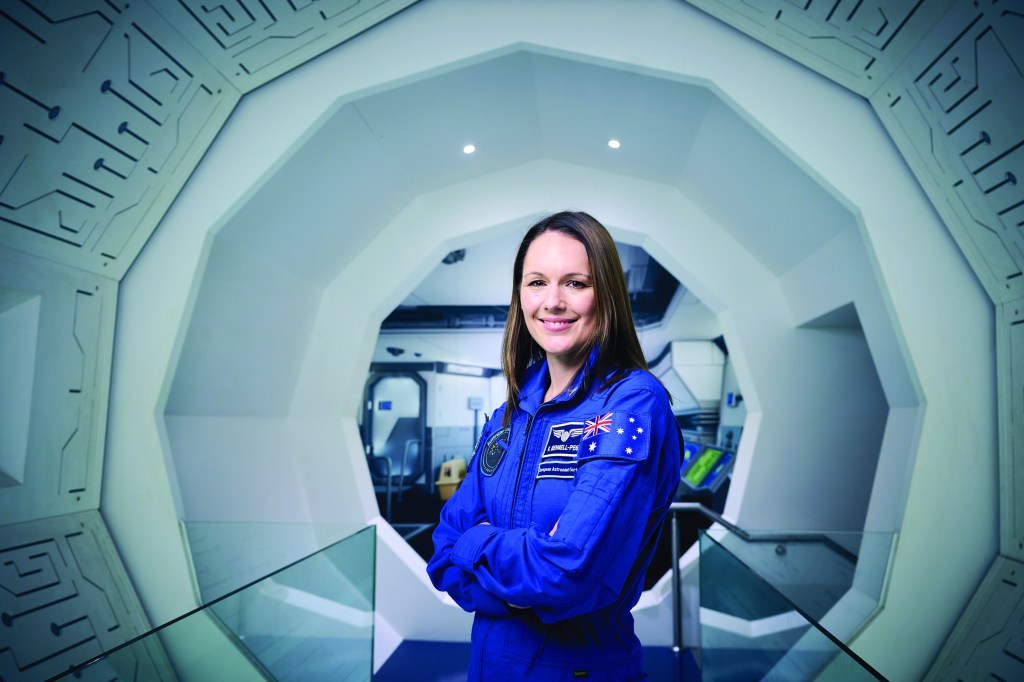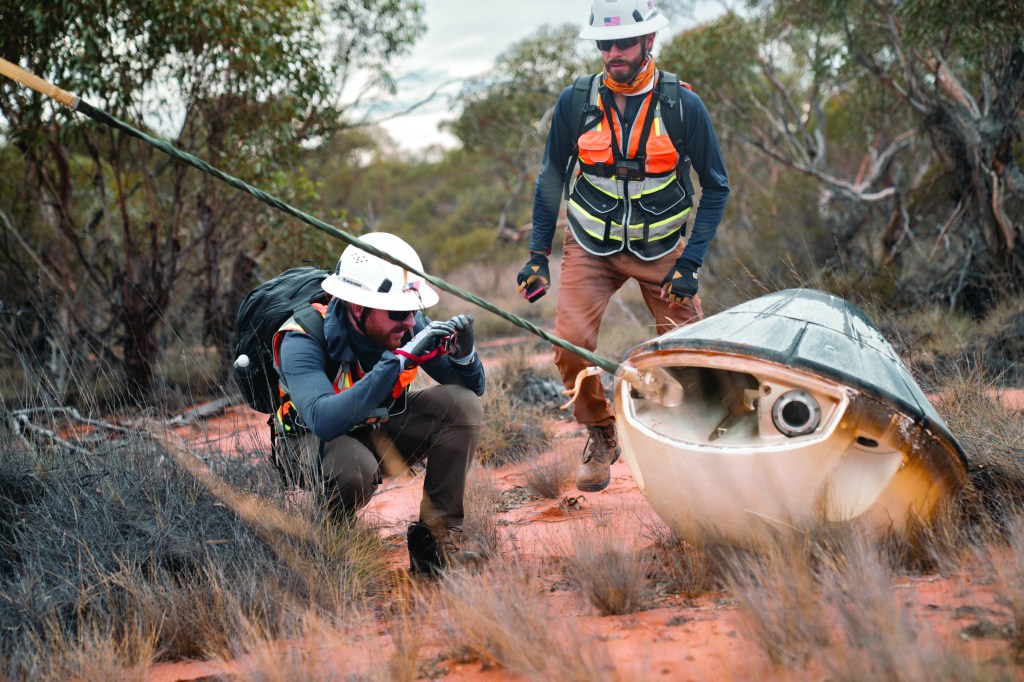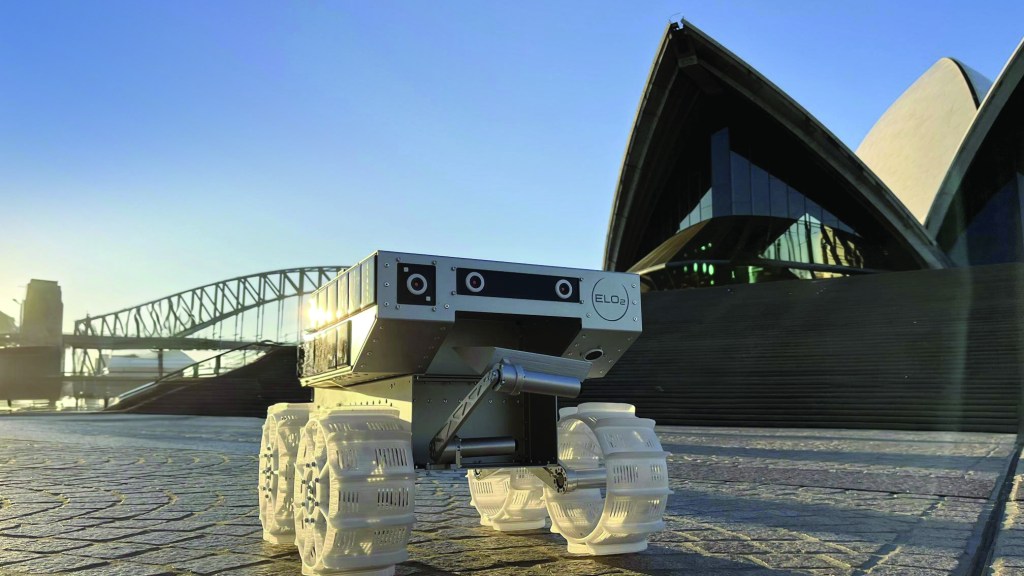Will the world’s space nations soon be calling Australia home?
Manufacturing in space may be humanity’s next frontier. Near-zero gravity makes it possible to produce purer materials, from cement to cancer drugs. As global space leaders gather in Sydney this September for the 76th International Astronautical Congress (IAC 2025), Australia is staking its claim in the new, orbital economy. Its offering: vast lands, clear skies and, perhaps surprising to many, experience.
BRANDVOICE – SPECIAL FEATURE

A strange capsule fell from the sky over South Australia in May. It entered the earth’s atmosphere at 25 times the speed of sound. Then, with a parachute slowing its descent, it touched ground at exactly 11.37 am. There it lay among desert shrubs, on Aboriginal land the size of the Netherlands. Its precious cargo: protein crystals for the antiviral drug Ritonavir, perfectly formed after 60 days in space.
California-based start-up Varda Space Industries is behind the endeavour. The company is on a mission to build the infrastructure for a new space economy that harnesses microgravity – the weightlessness that reigns earth’s orbit – to make anything from medication to building materials. The capsules serve as flying science labs.

When US authorities denied Varda’s first attempt to bring a capsule back in 2023 amid heavy American air traffic, the start-up turned to Australia. Together with Adelaide-based company Southern Launch, Varda has since landed two of its capsules safely on vast uninhabited outback terrain known as the Koonibba Test Range. More launch-and-return missions are already scheduled.
The unusual collaboration created a buzz in Australia, which is emerging on the global stage as a strategic partner for space technology and services.
“Varda’s missions to improve the manufacturing of medicines remind us that space not only generates economic opportunities but ultimately improves life on Earth,” says Enrico Palermo, Head of the Australian Space Agency.

“Australian space capability has developed to a point where it’s really ready to break out,” says Dan Lloyd, Head of the Space Industry Association of Australia (SIAA). “Australia has serious competitive strengths on many frontiers of the new orbital economy.
“We have a large land area, low population density, clear skies, as well as world-class universities and researchers, pioneering space companies with local advanced manufacturing, a supportive government, and a raft of industries capitalising on space sector growth.
“It’s such an exciting time. The conditions are all lining up beautifully.”
Space experts converge on Sydney

Manufacturing in space will be one of many hot topics at the 76th International Astronautical Congress (IAC 2025), the world’s largest annual gathering of space professionals organised by the International Astronautical Federation (IAF) in different cities around the globe each year. This marks its first time in Sydney, with the competitive bid to host won by SIAA with the Australian Space Agency and the New South Wales Government.
Up to 8,000 space scientists, astronauts, government officials, academics and business delegates from about 100 countries will soon descend on Sydney to discuss everything and anything space-related, from arcane academic research to practical questions over how to avoid satellite collisions and how to improve life on earth.
Ministers will meet and nations connect. NASA is bringing a large delegation to the congress, as is the Indian Space Research Organisation. For Australia, record early registration numbers are a clear signal the world is intrigued by its growing capability to contribute to international space endeavours.
“In just a few years, we have gone from a niche contributor to a globally respected partner in space,” says Investment NSW Deputy Secretary Rebecca McPhee.
“We are incredibly excited to showcase the dynamic space ecosystem that’s emerged here in NSW and across Australia. The whole congress experience will cement our place on the international map for space innovation and development.”
Space tech pioneered in dusty outback mines
Australia’s geography is a drawcard.
What’s more, the country offers unrivalled expertise after years of pioneering technology in rugged outback conditions. Our robots thrive in dirty, dusty, dull and dangerous environments. Our communication systems span long distances to connect farms and mines. Unsurprisingly, NASA chose the Australian Space Agency to design and build a small, remote-controlled rover for a future mission to the moon.
“A lot of our capabilities have come from how we’ve had to uniquely learn to live and work in this beautiful, remote, vast Australia,” says Katherine Bennell-Pegg, Australia’s first national astronaut, who works at the Australian Space Agency.
“Space underpins so many functions in society today. Yet it’s a huge blind spot to most people,” says Bennell-Pegg.
Space technology is already part of everyday life. Tractors rely on GPS signals to know when to harvest the wheat. Banks use high-precision space clocks to run financial transactions. Satellite images inform climate scientists and firefighters. They track shipping containers in China, monitor military advances in Ukraine and record a cyclone’s landfall near Brisbane.
Manufacturing in space – as futuristic as it sounds – may only be a few years away. Microgravity helps particles bind together in greater order and with less impurities, creating perfect conditions for making better drugs, fibre optic cables or computer chips. Even stem cells grow neater in space, raising hopes for developing breakthrough cancer treatments.
“Like most Australians I’ve had family impacted by cancer. The fact our nation’s space industry is part of the research and science to cure it is a privilege,” says Bennell-Pegg.
Turning space debris into spacecraft fuel
A raft of Australian space start-ups will join the congress in September to share their vision for the future. There is Neumann Space, which has developed a revolutionary technology with the potential to turn space debris into spacecraft propulsion fuel. Sydney-based Space Machines Company is building an NRMA-style rapid repair service – or “Orbitside Assist” – for anything that breaks down or poses risk in space. Others, like Myriota and Fleet, use satellite data to help make the agriculture and resources industries more reliable and sustainable.
The flurry of innovation was enough for Dan Lloyd to leave telecommunications and become SIAA’s new chief executive earlier this year. “I was seeing one breakthrough after another, which convinced me the world is teetering on the brink of something amazing and Australia can be a huge part of it,” he says.
Katherine Bennell-Pegg knows about the rigour behind such breakthroughs.
“Astronauts put their lives on the line because we know how important the discoveries are for people here on earth,” she says. “We go to space for the earth.”
IAC 2025 takes place from 29 September to 3 October in Sydney. Visit www.iac2025.org FOR DETAILS.